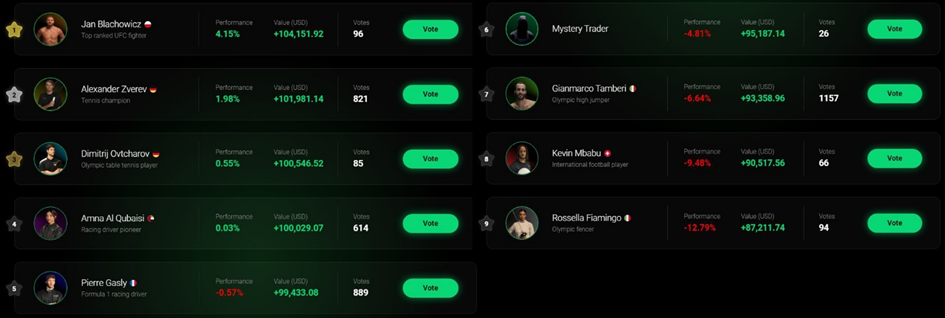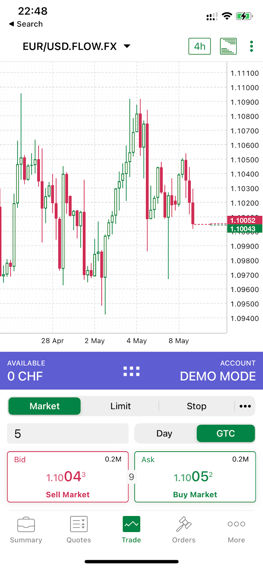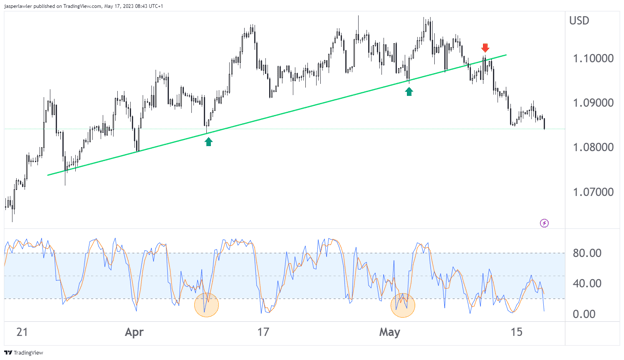Want to learn more about forex trading and how it works? Check out this beginner's guide to the EURUSD, USDJPY, and GBPUSD currency pairs.
In this brief introduction, we'll explore the dynamics of the EURUSD, USDJPY, and GBPUSD currency pairs, discussing a simple trading strategy and taking a look at current market conditions.
But first, we will briefly review what our world-famous athletes taking part in our online trading competition, the FlowBank Championship,
traded last week.
After nearly three weeks, the excitement in the FlowBank Championship remains high. While the shifts on the front ranks are limited, the movements on the middle and back ranks are currently even bigger.
The ranking continues to be led by Jan Blachowicz, Polish UFC fighter. He is followed by the German duo Alexander Zverev, tennis player, and Dimitrij Ovtcharov, table tennis player.
The current taillight is Rossella Fiamingo, Italian epee fencer. However, nothing has been decided yet - the FlowBank Championship will continue until June 10, 2023. The ranking list is constantly updated and can be accessed here.

Status: 24.05.2023
Last week we saw large moves in the US dollar as Fed speakers spoke and as traders digested the stronger-than-expected US jobs figures. Athletes mostly traded the dollar with the EUR/USD and USD/JPY pairs.
The euro was also a currency of choice as athletes traded the EUR/AUD and EUR/GBP. The moves were mostly short, benefiting on the euro falling versus the British Sterling and Australian Dollar.
The competing athletes used two trading strategies:
Scalping: the process of placing very short-term trades to target small price movements. The benefits are that there is no overnight risk as traders don't keep the position overnight. But it requires the disciple to manage risk and define precise targets.
Swing trading: the goal is to exploit price movements over a few days or weeks. Traders often follow the momentum, seeking to buy what is trending, to benefit from an existing trend, and not forecast a change of trend.
Forex trading for beginners
The basics of forex trading are simpler than you might think. You buy or sell one currency against another currency with the objective of making a profit and at the risk of taking a loss. Currency pairs are always quoted in pairs, with the first currency being the base currency and the second currency being the quote currency.
For example, in the EURUSD pair, the euro is the base currency, and the US dollar is the quote currency. If you believe that the euro will appreciate against the US dollar, you would buy the EURUSD pair. If you believe that the euro will depreciate against the US dollar, you would sell the EURUSD pair.
Here is the trade order ticket displayed on the FlowBank Pro app.

Source: FlowBank Pro iPhone app
There is usually no commission for placing a forex trade, you just pay the spread. The bid-ask spread is the difference between the highest price a buyer is willing to pay (the bid) and the lowest price a seller is willing to accept (the ask). The spread is usually expressed in pips, which is the smallest unit of price movement in forex trading.
Leverage is a key feature of forex trading that allows you to control a large amount of currency with a relatively small amount of capital. For example, if you have a leverage ratio of 100:1, you can control $100,000 worth of currency with just $1,000 of capital. However, leverage also amplifies the risks of forex trading, so it's essential to use it wisely and manage your risk carefully. This is essential.
What are EURUSD, USDJPY, & GBPUSD?
The EURUSD, USDJPY, and GBPUSD pairs are among the most actively traded (most liquid) currency pairs in the forex market.
The EURUSD pair represents the exchange rate between the euro and the US dollar. The euro is the currency of the European Union, while the US dollar is the currency of the United States. The exchange rate is influenced by various factors, such as the interest rate differential between the two currencies, the economic performance of the EU and the US, and geopolitical events that affect the global economy.
The USDJPY pair represents the exchange rate between the US dollar and the Japanese yen. Japan is a significant exporter and has a highly developed economy, while the US is the largest economy in the world. The exchange rate is influenced by various factors, such as the interest rate differential between the two currencies, the economic performance of Japan and
The GBPUSD currency pair represents the exchange rate of the British pound sterling and the US dollar. It is one of the most popular currency pairs in the forex market, with high liquidity and trading volume. The pair is also known as "cable," a nickname that originated from the transatlantic cable that was used to transmit the exchange rate between London and New York in the 19th century.
A simple trading strategy for beginners
A popular technical analysis strategy for forex trading involves using trendlines to identify potential trade opportunities. To draw a trendline, traders can draw a line between two or more significant swing lows in an uptrend or two or more significant swing highs in a downtrend.
When the price returns to the trendline, traders can look for a bounce off the trendline to trigger a potential trade entry. To further confirm the trade, traders can use an oscillator indicator such as the Relative Strength Index (RSI) or Stochastic Oscillator to identify oversold or overbought conditions.
For example, when the price bounces off an uptrend line, and the RSI indicator is oversold, it can confirm a buy signal. Similarly, when the price bounces off a downtrend line, and the RSI indicator is overbought, it can confirm a sell signal. By combining trendlines and oscillator indicators, traders can develop a simple trading strategy to enter and exit trades based on price action and momentum.
EURUSD market analysis
Applying the example strategy to current market conditions unveils a rising trendline on the 4-hour chart for the EUR/USD pair, where bounces off the trendline were confirmed with oversold conditions on the stochastic indicator, presenting possible buying opportunities.
Eventually, the trendline broke when the price fell below it. The price tried to rally, but the trendline rejected the advance, and the price continued lower afterward.

Source: FlowBank / TradingView
*Disclaimer: This is not investment advice.
For those eager to uncover the depths of forex trading and discover how to profit from it, delve into our comprehensive guide on What is Forex Trading and How to Profit from It?.




